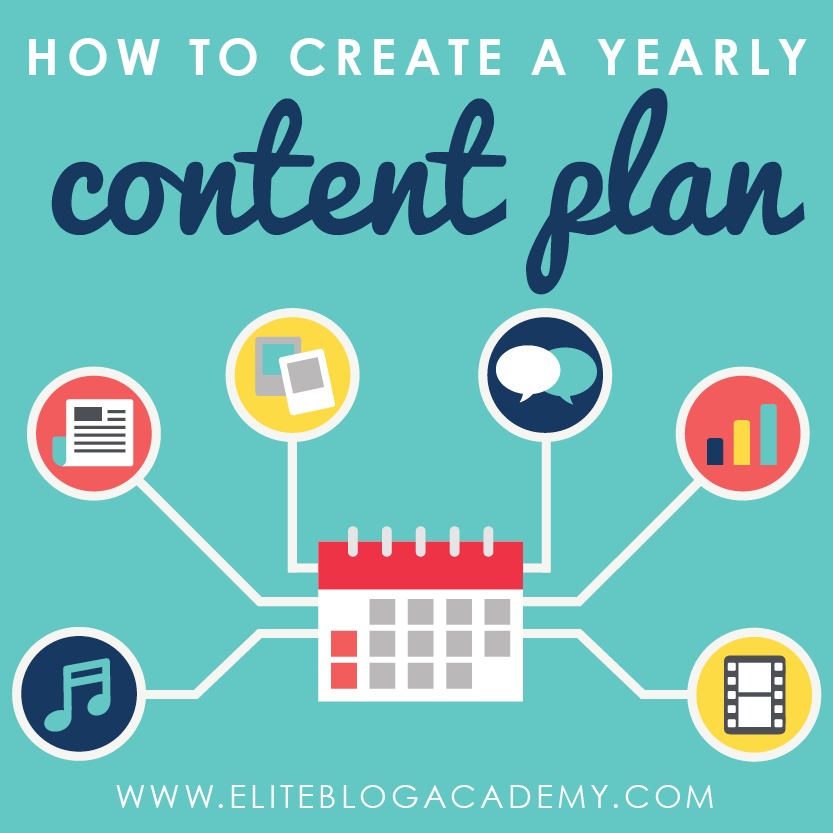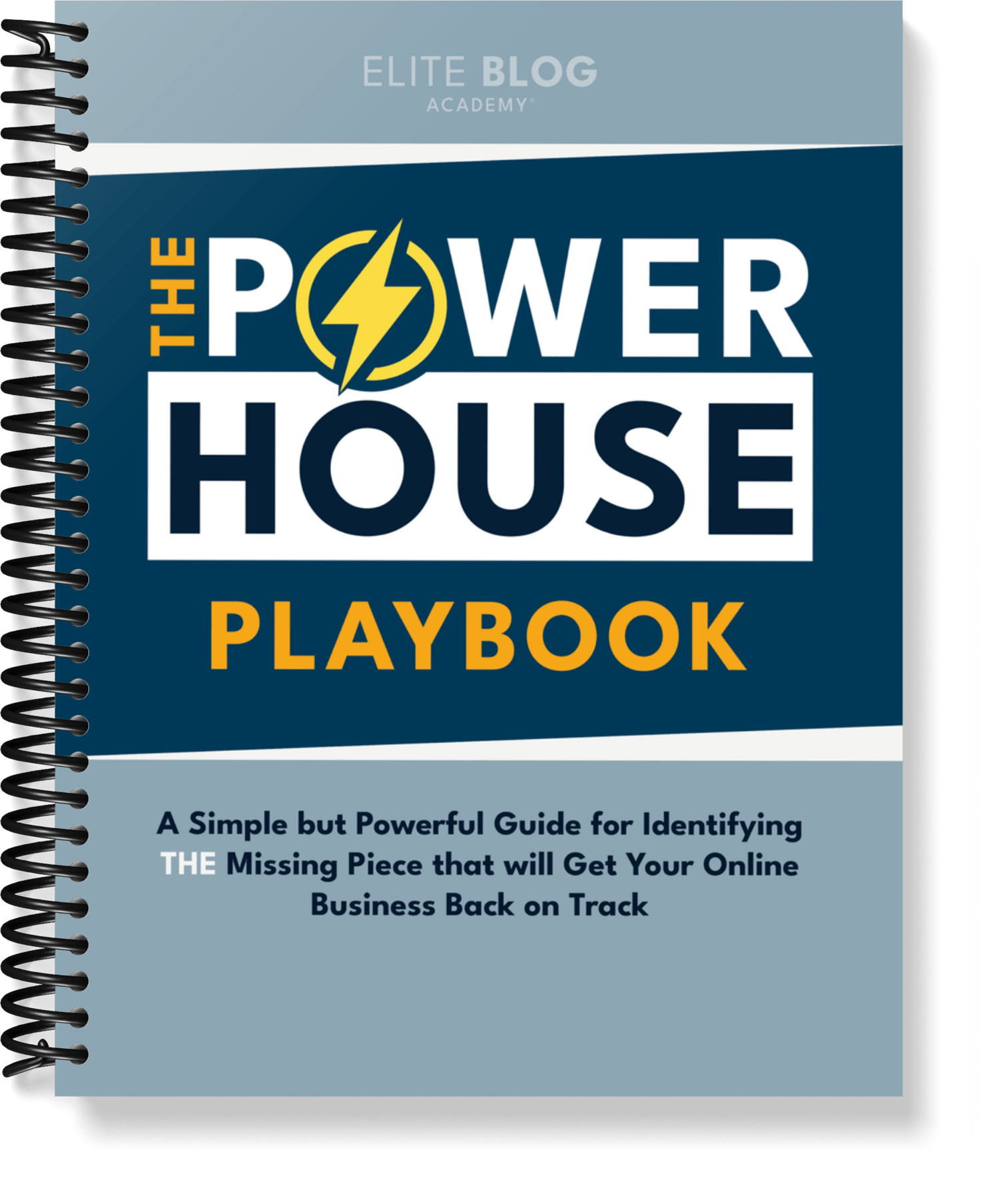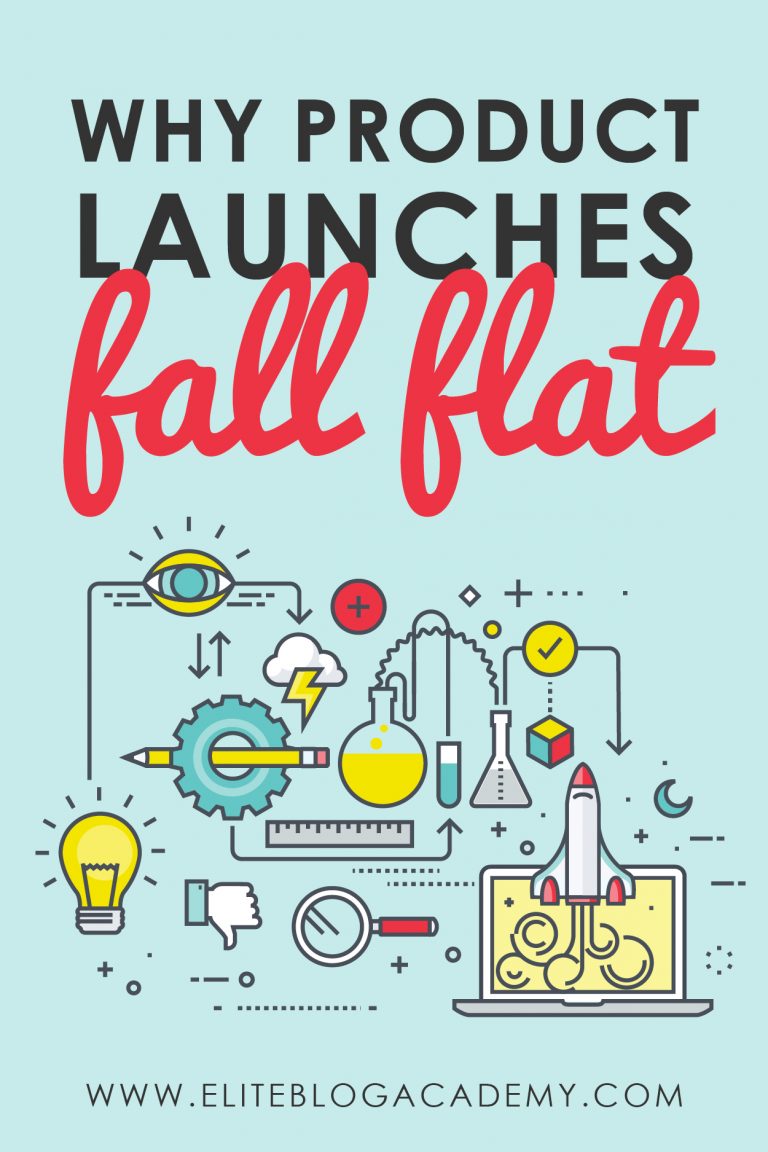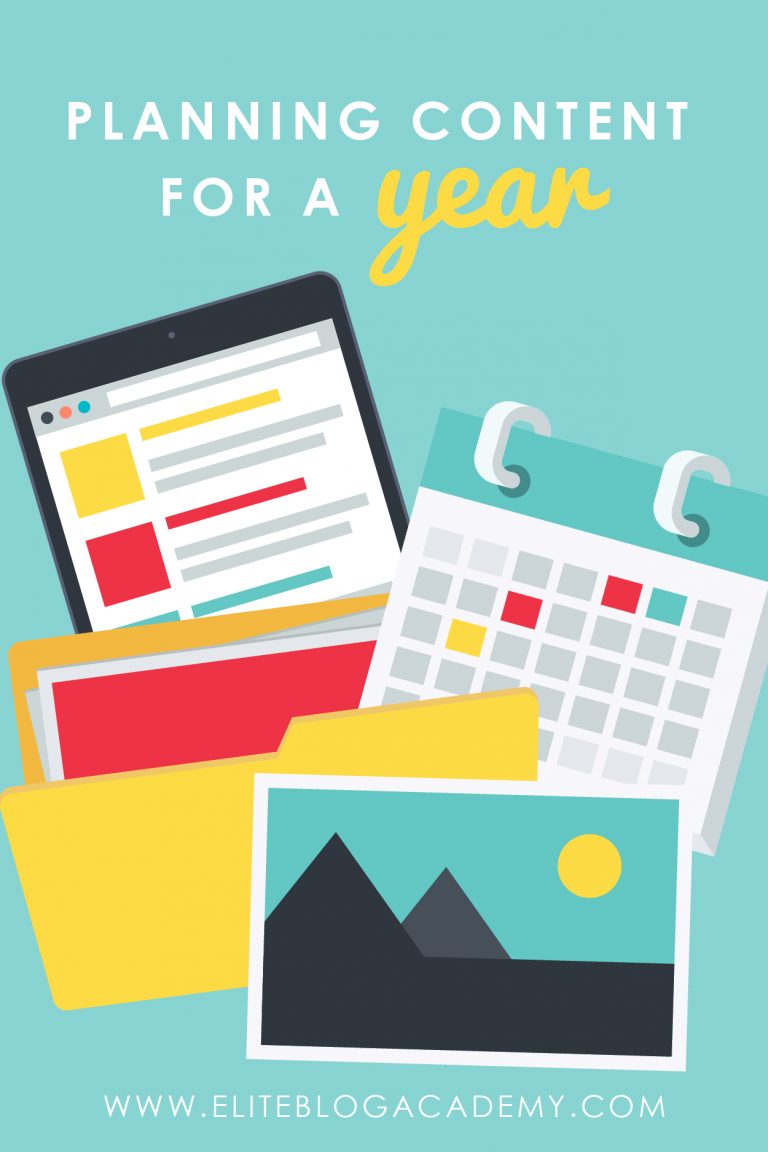How to Create a Content Calendar for an Entire Year

Coming up with blog topic ideas is tough! Learning how to plan a blog content calendar can save you time, energy, and headaches in the upcoming months.
The new year is always a good time to take stock of where we are, where we want to go, how we plan to get there, and what roadblocks are standing in our way. And, when it comes to blogging, one of the biggest roadblocks can be figuring out how to create consistently stellar content.

Do you ever feel like you are missing something?
Our newest free guide will show you the exact steps for identifying THE missing piece that will get your business back on track. Gain clarity and know what you need to do next to start getting traction again.
That’s where the content calendar comes in.
Over the years, I’ve found that creating an annual content calendar is one of the best ways to stay organized throughout the year — and save myself a ton of time, energy, and headaches trying to come up with last-minute topic ideas.
Of course, coming up with a whole year’s worth of content can feel a little daunting. If you’re anything like me, you either feel totally overwhelmed trying to brainstorm a bunch of ideas at once (brain freeze!) or you worry that planning ahead will make your content feel forced and inauthentic — that you’ll lose your personal touch.
Believe me — I get it. In fact, for most of us, blogging started off organically, as an off-the-cuff way for us to share our ideas. We would think of a topic we wanted to write about, we’d write that blog post, and then we’d publish it. There was no real plan or schedule behind it–it was just in the moment. That’s definitely how I started!
Don’t get me wrong — there are benefits to coming up with topic ideas on the fly. When our ideas come to us in the moment, they feel very real, current, and authentic, which is great. And if you’re the kind of person who thrives on those kinds of in-the-moment ideas, by all means, keep doing what you’re doing!
But for all of us — whether we’re the kind of person who needs a little more structure around our content or the kind of person who likes to write whatever comes to us in the moment — learning how to plan blog content for a year can help us create a road map for our blogs. It fills the gaps when we’re feeling uninspired and gives us a direction to follow throughout the year. It also helps us to get ahead so we’re not scrambling to come up with ideas for Wednesday’s blog post at 11 p.m. on Tuesday night (I’ve definitely been there!).
Side note: Just because we’re creating a yearly content plan doesn’t mean it’s set in stone! If we come up with an idea that we’re super passionate about in the moment, we can always move things around to make room. There’s still plenty of room for spontaneity when we have a content plan!
Now, we won’t know every topic that we want to write about all year on January 1. And that’s totally okay! But again, having that plan in place will at least get the wheels turning and take us in the right direction.
How, exactly, do we go about creating our yearly content plan?
Creating a Content Calendar for the Entire Year
What steps can we take to put our plans into action?
Create a Broad Overview of the Year
The first step to creating a yearly content plan is to start wide. Creating a broad overview of the year and breaking it down by month will help us to start thinking about what kind of content would be best for each month.
We can either write down the names of each month on a Google doc or use an actual calendar app — whatever feels best. Once we’ve got our months down, we can start jotting down ideas. Are there any themes we want to cover across a certain month? Are any topic ideas coming to us that make sense for a certain season? There’s no need to get everything out at once, but this is just a great way for us to get our creative juices flowing.
Evergreen vs. Seasonal Content
This isn’t exactly a step in the process, per se, but I think it’s really important when we’re making our yearly content calendars to understand evergreen vs. seasonal content.
Evergreen content is content that never goes out of style. People can read it at any time and it will still be relevant. Seasonal content is content that fits a particular season, like Christmas or the 4th of July.
But here’s the thing — seasonal content can also be evergreen content. It might only be relevant at a specific time of the year, but we can create content that’s evergreen and that can be read year after year at that season.
Like this post, for example! This post is definitely seasonal. In January, people are thinking about setting goals, planning, and how to set themselves up for success in the upcoming year. So, technically, this is a seasonal post that will appeal to people right around the new year. But it’s also evergreen, because the content in this post will be just as relevant in 2019, 2022, and 2045! It’s evergreen because people can read it year after year.
In February, people will be thinking of Valentine’s Day and all the lovey-dovey-ness that goes along with it. In March, there’s spring cleaning. June brings warmer temperatures and summer fun… and all of those seasonal changes present new opportunities for us to create content in our niche that really speaks to our audience and what’s relevant to them in the moment.
So let’s not get stuck in the idea that every post we write has to be evergreen and relevant 365 days a year. Seasonal content can be evergreen too, and without it, we would be missing out on a lot of great season specific content ideas.
Add Specific Post Ideas
Once we’ve got your months laid out and a few general ideas for the direction in which we want to take our content, it’s time to get into the nitty-gritty and start adding specific post ideas.
For example, let’s say we know we want to focus on setting goals for January. We might add post ideas like “X things to do in January to make sure you hit your goals by December” or “X planning tools that will help you reach your goals this year”. Whatever our specific post ideas are, we want to write them down and add them to the month in which they’re most relevant.
Brainstorm Additional Content Ideas
After we’ve gotten all of our timely/seasonal post ideas on paper, it’s time to start brainstorming other content — content that might not be related to a certain month but we know will be a slam dunk with our readers.
The way I do it is with Post-It notes. Every January, I do a huge brainstorming session. I write each of my four main blog categories on a Post-It. Then I write each subcategory on another Post-It and lay them all out so I can see the visual structure of my blog. Once I have all the categories and subcategories that need content in front of me, I start coming up with ideas for each of them to fill up my content calendar for the year.
Now, I’m going to be honest — brainstorming topics like this can be tough! So it’s important to look for inspiration wherever we can.
One idea we’ve found to be super helpful is magazines. We subscribe to lots of different magazines in our niche. When it’s time to brainstorm, we look at the covers and titles of the articles. What do people want to read about? Are there certain topics that seem to be popping up everywhere? If so, that’s a good indicator it’s something our audiences are looking for.
Pinterest is also a fantastic place to find blog post topic ideas. Are certain types of content being pinned more than others? What are our ideal readers pinning and sharing?
Now, obviously, we never want to steal someone else’s content ideas — but there’s nothing wrong with looking elsewhere for a little inspiration!
Once we’re ready to roll, it’s time to do a rapid fire brainstorm. I like to set a timer — having a time limit makes it much easier for me than if the brainstorm was open-ended — and say to myself, “Okay, Ruth… you’ve got 20 minutes. How many ideas can you come up with?” Then I use those twenty minutes to fill in my content calendar for the year.
I might fill it with specific blog post titles or I might come up with themes I want to cover for certain months (like the 31 Days of Living Well and Spending Less).
Once our twenty minutes are up, we’re done! At this point, we’ll have a great jumping-off point for our yearly content. Now, obviously it might change — we might add or move things around — but we have a structure and a plan to follow.
Struggling to come up with new content for your blog? We know how tough it can be! That’s why we came up with 120 awesome blog post ideas that will help you beat writer’s block and bring killer content that builds your business every time! Judine says, “This is one of the best tools I’ve gotten from EBA!” Best of all, it’s free, but only for a limited time! GET IT HERE.
Celebrate Good Times, Come On!
After our brainstorm, it’s time to take a moment to celebrate! Planning out our calendar content is a huge achievement, so at this point in the process it’s really important that we stop for a moment, pat ourselves on the back, and give ourselves the recognition for putting in the work to plan out our year.
But as exciting as this part of the process is, we’re not quite finished yet! Once we’ve got what we’re going to write planned out, it’s time to plan how we’ll write it.
Batch Your Content
Batching our content is a great way to stay on top of content and get things done. By batching our content and creating a month’s worth of content at once, it takes the pressure off. It gives us the time and space to make sure what we’re posting on our blogs is true to who we are and what we want to say and is presented in a way that will have the maximum impact on our readers (instead of rushing to get a post done the day before it’s scheduled to go live).
There are a few different ways we can batch content. I like to do it in phases. First, I’ll create detailed outlines for all the month’s posts so I have a clear idea of what I want to write and how I want to structure it. Then I’ll go through and actually write all the content. Then I’ll edit and proofread it, then I’ll format it and add graphics. By taking things one step at a time, I can really get in the zone and focus on what I’m doing. I’m either in writing mode, or I’m in editing mode, or I’m in formatting mode — I’m not worried about the other steps, which keeps me more engaged with the content.
By batching content, we allow ourselves to get ahead of the game — and make sure our content is the best it can be and is ready to roll long before its publishing date!
Wrapping Things Up
Taking the time out now to plan out our content for the year will save us a ton of time, energy, and headaches in the upcoming 12 months. But we can’t rest on our laurels! Just because we’re creating a content plan now doesn’t mean we don’t have to think about content until next January.
Amazing content ideas can — and will — come to us throughout the year. And we want to capture them and work them into our yearly content plan. Carry a journal or use the notes app on your phone to jot down inspiration, ideas, and stories as they come to you. Then take the best ones and find a way to work them into your content calendar. Having a plan for our content all year is great, but we also need the flexibility to work on the amazing ideas that come to us after our plan is finished.
January is a great time to think about the year ahead. And when we take the time now to plan our content for the rest of the year, the year ahead will be a productive one filled with amazing content for our readers, and far fewer headaches for us!
Do you use a yearly content plan for your blog? If you’ve already started planning your content for this year, share your favorite planning trick with us in the comments below!
Got blogging overwhelm? A clear blog structure is CRITICAL to a blogger’s success. Our Blog Structure Blueprint will show you how to organize YOUR blog so that your readers can always find exactly what they’re looking for and become raving fans! It’s free, but only for a limited time! GET IT HERE.








Hello friends, how is everything, and what you would like
to say regarding this post, in my view its truly remarkable in support of me.
I just popped over here from the Trello post!
Getting a broad overview of the year and honing in on each season, month, and week’s posts is the easiest way for me to plan content.
Thanks for the great ideas!